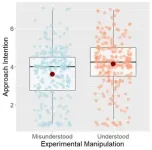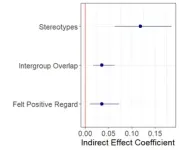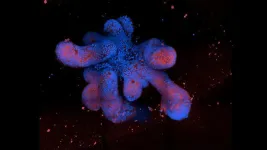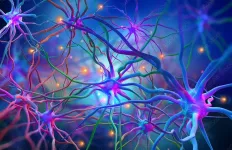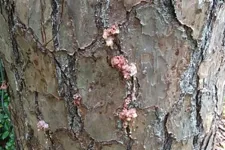(Press-News.org) Researchers from Nagoya University Graduate School of Medicine in Japan have successfully treated the skin diseases epidermolytic ichthyosis (EI) and ichthyosis with confetti (IWC) by transplanting genetically healthy skin to inflamed areas. Transplanting healthy skin to inflamed areas has been used as a treatment option for severe burn injuries. They applied this technique from a common disease to rare diseases. Their research could pave the way for a new and effective treatment strategy for these challenging skin disorders. The study was published in the British Journal of Dermatology.
EI and IWC are rare genetic skin disorders caused by mutations in one of the two genes that make keratin in the skin, KRT1 or KRT10. As keratin is important for maintaining skin integrity, these mutations lead to fragile skin that blisters and forms thick, scaly patches.
Some patients suffering from these diseases exhibit large patches of healthy skin in the affected areas. These spots result from revertant somatic recombination, a process where spontaneous genetic changes correct the mutations by altering the genes that cause the skin condition. This causes the affected areas to return to a healthy state.
The group led by Lecturer Kana Tanahashi, Prof. Masashi Akiyama, and Associate Prof. Takuya Takeichi realized that revertant somatic recombination could be used for a pioneering therapy. By making grafts called cultured epidermal autografts (CEAs), which contain genetic mutation corrections that give healthy skin, and grafting these naturally corrected skin cells to affected areas, outbreaks of the disease could be controlled.
They evaluated the feasibility of transplanting CEAs derived using revertant epidermal keratinocytes —those that lack the keratin mutation— back onto patients. CEAs were transplanted to peeling lesions of the patients. Four weeks after transplantation, two of the patients had no ichthyosis recurrence in the entire treated area, while the third did not show recurrence in more than a third (39.52%) of the affected area.
Although it was initially successful, 24 weeks after transplantation, all three patients experienced some recurrence of ichthyosis at the transplant sites. The researchers concluded that the best use of the technique is to alleviate symptoms when the disease is severe and to treat local EI symptoms in specific regions that affect quality of life.
The research marks a significant step forward in the quest to find effective treatments for EI and IWC. By utilizing the natural genetic correction mechanisms of the body, researchers have demonstrated a novel and promising treatment. Their study opens the door to further studies and clinical trials to refine the approach and extend its benefits to more patients, offering hope for those affected by these intractable skin disorders.
END
Treating rare skin diseases by transplanting healthy skin
2024-06-11
ELSE PRESS RELEASES FROM THIS DATE:
Revealed: tricks used by opioid giant to mold doctors’ minds
2024-06-11
Opioid giant Mallinckrodt, selling more than Purdue Pharma in the US, was forced by the courts to publish more than 1.3 million internal documents.
In The BMJ today, researchers Sergio Sismondo and Maud Bernisson sift through nearly 900 contracts which together reveal a carefully coordinated effort to shape medical attitudes toward pain medicine.
Pharmaceutical companies have a long history of managing physician and public opinion, explain the authors. For example, by recruiting physicians to serve as influencers, planting articles in scientific journals, coordinating conference presentations, and developing continuing medical education (CME) courses.
Amid surging ...
Lab-grown ‘mini-guts’ could help in development of new and more personalized treatments for Crohn’s disease
2024-06-11
Cambridge scientists have grown ‘mini-guts’ in the lab to help understand Crohn’s disease, showing that ‘switches’ that modify DNA in gut cells play an important role in the disease and how it presents in patients.
The researchers say these mini-guts could in future be used to identify the best treatment for an individual patient, allowing for more precise and personalised treatments.
Crohn’s disease is a form of inflammatory bowel disease (IBD). It is a life-long condition characterised by inflammation of the digestive tract that affects around one in 350 people in the UK, with one in four presenting before the age of 18. Even at its mildest, it ...
How the brain is affected by Huntington’s Disease
2024-06-11
The genetic disease Huntington’s not only affects nerve cells in the brain but also has widespread effects on microscopic blood vessels according to research.
These changes to the vasculature were also observed in the pre-symptomatic stages of the disease, demonstrating the potential for this research for predicting brain health and evaluating the beneficial effects of lifestyle changes or treatments.
Huntington’s disease is an inherited genetic condition leading to dementia, with a progressive decline in a person’s movement, memory, and cognition. There is currently no ...
MOLLER experiment baselined and moving forward
2024-06-11
NEWPORT NEWS – The U.S. Department of Energy’s Thomas Jefferson National Accelerator Facility is moving forward on a project to gain new insight into the interactions of electrons. The MOLLER experiment will make an extremely precise measurement of the electron’s force field to learn about specific and rare interactions with other subatomic particles. On May 28, the experiment received approvals of both Critical Decision 2 and Critical Decision 3 from the DOE.
The MOLLER research program was established at Jefferson Lab as a DOE Major Item of Equipment (MIE) project to build the equipment required to support the experiment.
These ...
Engaging with patients for better treatments and outcomes for smell and taste disorders
2024-06-11
PHILADELPHIA (June 10, 2024) – Researchers and patient advocates from the Monell Chemical Senses Center, Smell and Taste Association of North America (STANA), and Thomas Jefferson University came together during the COVID-19 pandemic to incorporate patient voices in efforts to prioritize research areas focused on improving care for people with smell and taste disorders.
To this end, in 2022 these collaborators conducted a survey and listening sessions with patients, caregivers, and family members affected by impaired smell or taste. They asked about their individual perceptions of the effectiveness of treatments, among other topics. Using an online questionnaire, ...
Study shows first evidence of sex differences in how pain can be produced
2024-06-10
Research suggests that males and females differ in their experience of pain, but up until now, no one knew why. In a recent study published in BRAIN, University of Arizona Health Sciences researchers became the first to identify functional sex differences in nociceptors, the specialized nerve cells that produce pain.
The findings support the implementation of a precision medicine-based approach that considers patient sex as fundamental to the choice of treatment for managing pain.
“Conceptually, this paper is a big advance in our ...
Hubble finds surprises around a star that erupted 40 years ago
2024-06-10
Astronomers have used new data from NASA's Hubble Space Telescope and the retired SOFIA (Stratospheric Observatory for Infrared Astronomy) as well as archival data from other missions to revisit one of the strangest binary star systems in our galaxy – 40 years after it burst onto the scene as a bright and long-lived nova. A nova is a star that suddenly increases its brightness tremendously and then fades away to its former obscurity, usually in a few months or years.
Between April and September 1975, the binary system HM Sagittae (HM Sge) grew 250 times brighter. Even more unusual, it did not rapidly fade away as novae commonly do, but has ...
NASA’s Webb opens new window on supernova science
2024-06-10
Peering deeply into the cosmos, NASA’s James Webb Space Telescope is giving scientists their first detailed glimpse of supernovae from a time when our universe was just a small fraction of its current age. A team using Webb data has identified 10 times more supernovae in the early universe than were previously known. A few of the newfound exploding stars are the most distant examples of their type, including those used to measure the universe's expansion rate.
"Webb is a supernova ...
May research news from the Ecological Society of America
2024-06-10
The Ecological Society of America (ESA) presents a roundup of four research articles recently published across its six esteemed journals. Widely recognized for fostering innovation and advancing ecological knowledge, ESA’s journals consistently feature illuminating and impactful studies. This compilation of papers explores how wolf reintroduction affects other carnivores, how drought and grazing snails together drive salt marsh productivity, the key to an invasive fish’s success and the plight of backyard trees, ...
Taking the fall: How stunt performers struggle with reporting head trauma
2024-06-10
In the heart-pounding action scenes of your favorite blockbuster, it's not always the A-list actor taking the risks but the unsung heroes—stunt performers—who bring those breathtaking moments to life. However, behind the glamour lies a grim reality: the reluctance of these daredevils to report head trauma, fearing it could jeopardize their careers.
In the recently released blockbuster, “The Fall Guy,” audiences get a behind-the-scenes look at what stunt professionals go through to create those most thrilling moments, and although this film celebrates these skilled professionals, it does not highlight the impact the stunts can have on their health.
Ohio ...

